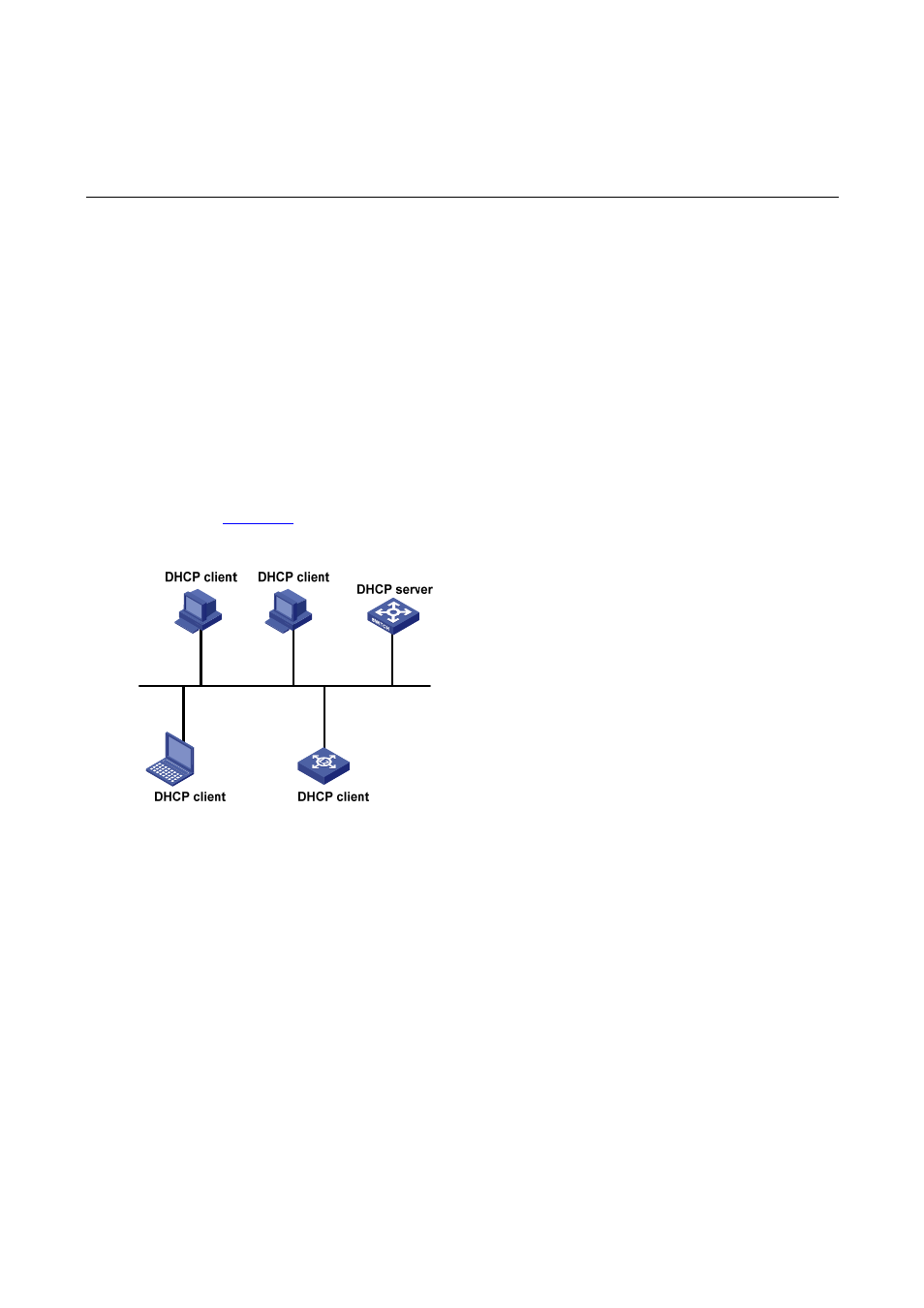1 dhcp overview, Introduction to dhcp, Dhcp ip address assignment – H3C Technologies H3C S3100 Series Switches User Manual
Page 498: Ip address assignment policy, Dhcp overview

1-1
1
DHCP Overview
Introduction to DHCP
With networks getting larger in size and more complicated in structure, lack of available IP addresses
becomes the common situation the network administrators have to face, and network configuration
becomes a tough task for the network administrators. With the emerging of wireless networks and the
using of laptops, the position change of hosts and frequent change of IP addresses also require new
technology. Dynamic host configuration protocol (DHCP) is developed to solve these issues.
DHCP adopts a client/server model, where the DHCP clients send requests to DHCP servers for
configuration parameters; and the DHCP servers return the corresponding configuration information
such as IP addresses to implement dynamic allocation of network resources.
A typical DHCP application includes one DHCP server and multiple clients (such as PCs and laptops),
as shown in
.
Figure 1-1 Typical DHCP application
DHCP IP Address Assignment
IP Address Assignment Policy
Currently, DHCP provides the following three IP address assignment policies to meet the requirements
of different clients:
z
Manual assignment. The administrator configures static IP-to-MAC bindings for some special
clients, such as a WWW server. Then the DHCP server assigns these fixed IP addresses to the
clients.
z
Automatic assignment. The DHCP server assigns IP addresses to DHCP clients. The IP addresses
will be occupied by the DHCP clients permanently.
z
Dynamic assignment. The DHCP server assigns IP addresses to DHCP clients for predetermined
period of time. In this case, a DHCP client must apply for an IP address again at the expiration of
the period. This policy applies to most clients.
